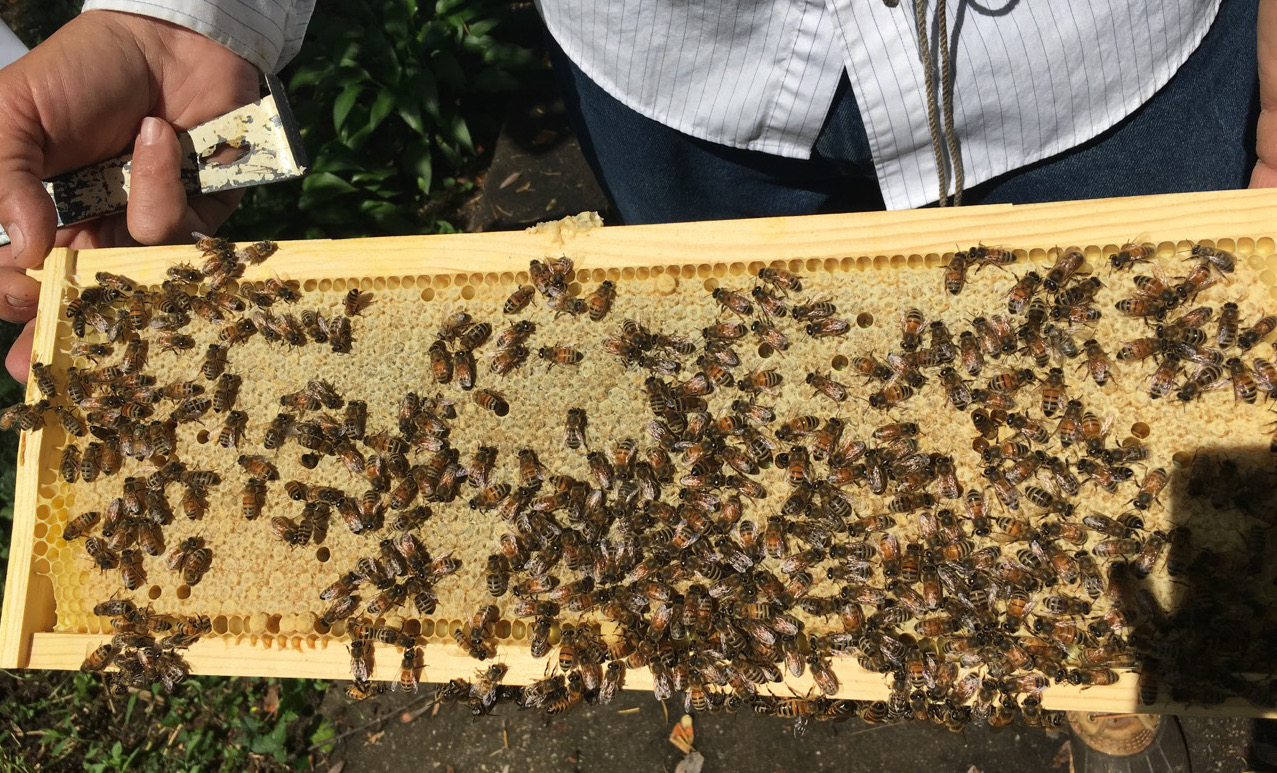The 2019 Calendar Year is already zipping past us ferociously … today is the last day of February. The Beekeeper Calendar in the DC metro area begins in August and goes through July.
When time permits, we will post entries about what is happening with our bees and our apiaries. This is our first post, so I should update where we are and how we got here … but that would take a while and I’ll never catch up to the present. So, I will start in the present and then flash back as appropriate.
Last night was a great meeting of the DC Beekeeping Alliance (DCBA) at the National Grange. The speaker was retired Virginia Bee Inspector, Bob Wellemeir, and his topic was Swarm Biology, Prevention, and Management. Bob has decades of experience as a beekeeper, bee inspector and advisor to thousands of beekeepers in Virginia.

Bob’s first quotable line is this: “You don’t prevent swarms. Trying to prevent honey bees from swarming is like trying to prevent teenagers from having sex. It happens.” Swarming is a natural instinct and behavior for honey bees. It is how the species reproduces.
The best we can do, as beekeepers, is to reduce the chances (a little bit), and when they do, try to manage he aftermath. If we can allow our bees to satisfy their swarm instinct and at the same time, keep the swarmed bees without climbing a 50-foot tree to capture them, we are in good shape. There was plenty of good information in his talk.
The other part of the meeting was about the DCBA Swarm Squad. Most beekeeping clubs try to offer a service to help capture bees that are swarming. Last year the DC club had 72 ready volunteers covering 37 ZIP codes. I plan to join the swarm squads in Montgomery County and DC this year, after doing a couple of “ride alongs” with experienced swarm catchers. The bonus, of course, is that when you catch a swarm, you get some free bees to add to your apiary … or to give/sell to another beekeeper who needs bees.
Swarming bees are often the scariest part of having a honey bee in the neighborhood. People panic when they suddenly see a cluster of bees hanging from their tree, porch, sign, etc. What many people don’t realize is that swarming bees are as calm and docile as honey bees can be. When you see people doing that crazy “bee beard” thing, or covering their hands and arms with hundreds of bees … those are probably bees from a swarm. All they want to do is be near the queen and wait for their scouts to find a new home. They have full honey stomachs, they don’t have any brood or honey to protect. If you are gentle with them, they will barely be curious about you.
After the meeting, our friend Patricia took some photos of our hives with her infra-red camera. We have to do this when the sun is not out because otherwise the only heat signature will be where the sun has heated the exterior of the bee boxes. I’ll post the pictures when we receive them. So far, it seems like all three of our hives: Stanley, Livingstone and Magellan are doing well. On a sunny day we can see this by the bees flying in and out. It is still too cold to do a proper inspection of the hive and start rearranging for the Spring.
